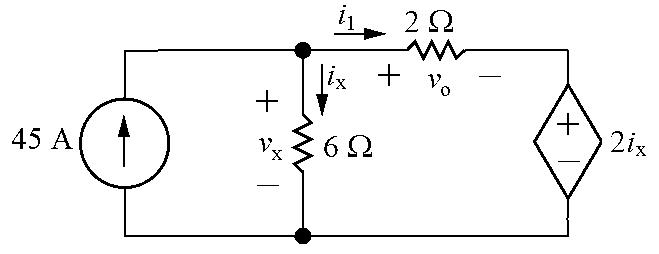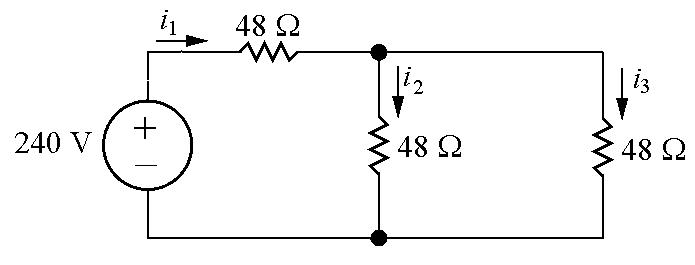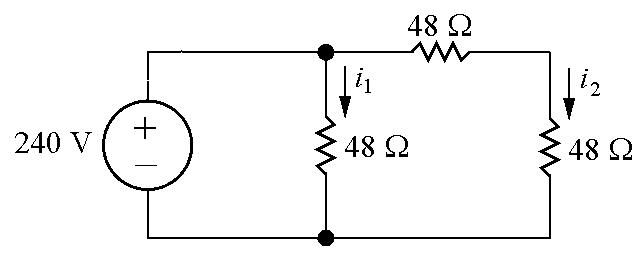
1 minute read
CHAPTER 2 Circuit Elements
P 2 32 Label unknown voltage and current: vx + vo + 2ix = 0 (KVL) vx = 6ix (Ohm’s law)
6ix + vo + 2ix = 0 so vo = 4ix o ix = 4 Also,
Advertisement
1 = vo (Ohm’s law) 2 45 = ix + i1 (KCL) Substituting for the currents ix and i1:
The only two circuit elements that could supply power are the two sources, so calculate the power for each source: v = 6i = 6 vo = 6(60/4) = 90V x x 4 p45V = 45vx = 45(90) = 4050W
= 900W
Only the independent voltage source is supplying power, so the total power supplied is 4050 W
P 2.33 Label unknown current:
20+ 450i + 150i = 0 (KVL and Ohm’s law) so 600i = 20 → i = 33.33mA vx = 150i = 150(0.0333) = 5V (Ohm’s law) vo = 300 vx 100 = 300(5/100) = 15V (Ohm’s law)


Calculate the power for all components:
= 20i = 20(0.0333) = 0.667W
Thus the total power absorbed is
P 2 34 The circuit: v1 = (4000)(0.01) = 40V (Ohm’s law)
Calculate the power for all components:
Therefore,
Thus the power in the circuit balances v
= 0 because no current can exist in a single conductor connecting two parts of a circuit.
Now replace iE by (1
Ri2 = 48(5)2 = 1200W

There are three radiators, so the total power for this heating system is total = 3prad = 3(1200) = 3600W
P 2 42 Each radiator is modeled as a 48Ω resistor:


Write a KVL equation for the left and right loops:
The power for the center radiator is
= 48i2 = 48(5)2 = 1200W
The power for each of the radiators on the right is pright = 48i2 = 48(2.5)2 = 300W
Thus the total power for this heating system is ptotal = pcen + 2pright = 1200+ 2(300) = 1800W
The center radiator produces 1200 W, just like the three radiators in Problem 2.41. But the other two radiators produce only 300 W each, which is 1/4th of the power of the radiators in Problem 2 41 The total power of this configuration is 1/2 of the total power in Fig 2 41
P 2.43 Each radiator is modeled as a 48Ω resistor:
Write a KVL equation for the left and right loops: 240 + 48i1 + 48i2 = 0

